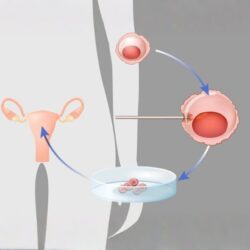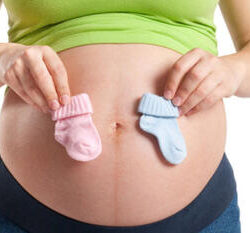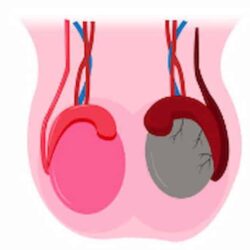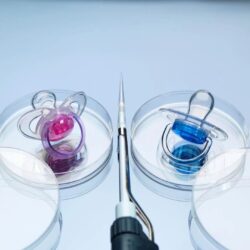What is the Sperm Separation Process for Gender Selection ?
Understanding Sperm Separation
Understanding Sperm Separation is an essential step in the process of gender selection and fertility treatment. Sperm separation is the method used to isolate sperm based on their sex chromosome, allowing for the selection of either male or female sperm for conception. This process has gained popularity as a means of family balancing and increasing the chances of having a child of a specific gender. There are various methods of sperm separation available, each with its own advantages and success rates.
These methods include Microsort technology, flow cytometry, and albumin separation. Understanding the differences between these techniques can help individuals make the best choice for their specific needs and goals.
Furthermore, the effectiveness and success rates of sperm separation methods are important factors to consider when exploring gender selection options. While no method can guarantee 100% accuracy, having a clear understanding of the potential outcomes can help individuals make informed decisions about their fertility treatment.
Methods For Gender Selection
Gender selection is a process that allows parents to choose the sex of their baby before conception or during pregnancy. There are several methods available for gender selection, each with its own unique benefits and limitations.
One popular method for gender selection is Preimplantation Genetic Testing (PGT), which involves using in vitro fertilization (IVF) to create embryos outside the body. Embryos are then tested for the presence of specific sex chromosomes, allowing parents to choose embryos of the desired sex for transfer into the uterus. This method is highly accurate and can be used to prevent the transmission of genetic disorders.
Another method for gender selection is the Ericsson method, which involves sorting sperm based on their ability to swim. This method uses a special solution to separate the sperm that carry X chromosomes (which produce female embryos) from those that carry Y chromosomes (which produce male embryos). While the Ericsson method is less invasive than PGT, it is also less reliable and may not always result in the desired gender.
Role Of Microsort Technology
Microsort technology is a revolutionary method of gender selection that has gained popularity in recent years. It allows parents to choose the sex of their child by separating sperm into X and Y chromosomes, increasing their chances of conceiving a child of their desired gender. This technology has opened up new possibilities for families who are looking to balance the genders of their children or have a specific preference.
The role of Microsort technology in the field of fertility and reproductive medicine is significant. It offers a safe, reliable, and non-invasive method of gender selection, providing an alternative to more invasive techniques such as preimplantation genetic diagnosis (PGD) or sperm sorting through the Ericsson method. Microsort technology makes it possible for couples to have greater control over their family planning, creating a more personalized experience when it comes to conceiving a child.
With its high level of accuracy and success rates, Microsort technology has become an increasingly popular choice for couples seeking gender selection. By utilizing flow cytometry to sort sperm cells based on their DNA content, this technology offers a more precise method of gender selection, resulting in a higher likelihood of conceiving a child of the desired sex. Additionally, it is a safe and effective option for individuals with genetic disorders that are linked to a specific gender, allowing them to reduce the risk of passing on these genetic conditions to their offspring.
Process Of Sperm Sorting
Sperm sorting is a process used in assisted reproductive technology to separate sperm cells based on their genetic content. This technique is often used in cases where gender selection is desired, as well as for other medical reasons such as the prevention of genetic diseases. There are several different methods of sperm sorting, each with its own unique process and effectiveness.
One common method of sperm sorting is called flow cytometry, which involves the use of a machine to analyze the DNA content of individual sperm cells. The machine then sorts the sperm cells into X-bearing (female) and Y-bearing (male) populations based on their genetic content. This method is highly accurate and can be used to achieve a desired gender outcome with a high degree of success.
Another method of sperm sorting is called the Ericsson method, which uses different densities of albumin to separate sperm cells. This method is based on the idea that X-bearing sperm cells are heavier than Y-bearing sperm cells, and therefore will sink to the bottom of the albumin gradient while the lighter Y-bearing sperm cells will float to the top. This method is less accurate than flow cytometry, but is often more cost-effective and can still be used to achieve gender selection in some cases.
Effectiveness And Success Rates
When it comes to sperm separation and gender selection, many people are curious about the effectiveness and success rates of the various methods available. It’s natural to want to understand the likelihood of achieving the desired outcome when considering such an important decision.
One of the most well-known methods for gender selection is Microsort technology, which separates sperm based on their X and Y chromosomes. Studies have shown that the success rates of Microsort are quite promising, with the ability to increase the likelihood of conceiving a child of the desired gender. However, it’s important to note that individual success rates can vary based on factors such as age, overall health, and other reproductive factors.
When considering the effectiveness and success rates of sperm sorting and gender selection methods, it’s crucial to consult with a reproductive specialist who can provide personalized information and guidance. By understanding the various factors that can impact success rates, individuals and couples can make informed decisions and explore the options that align with their goals and preferences.








